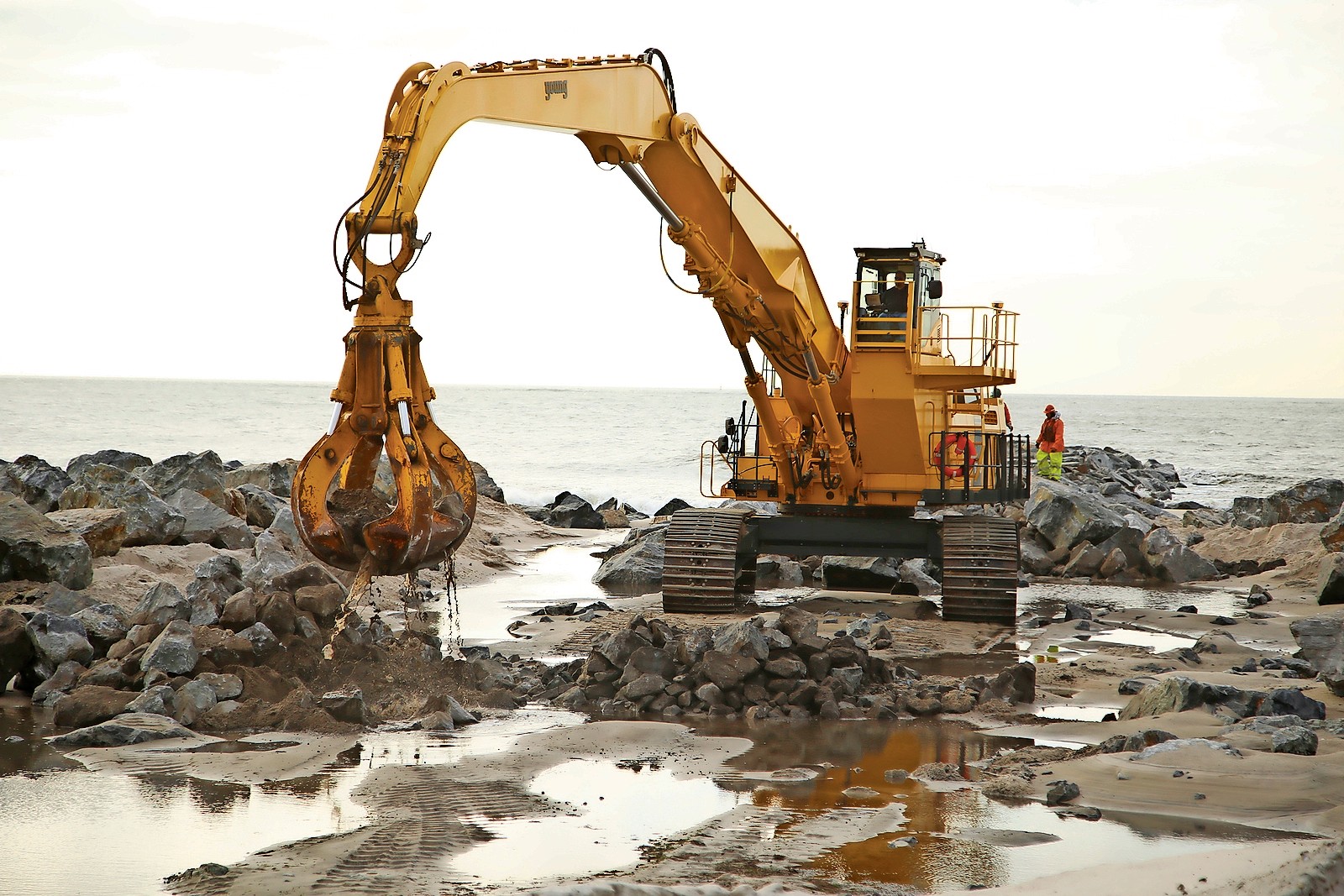Army Corps project could impact summer season
Officials call on agency to change work schedule

Officials are calling on the Army Corps of Engineers to rethink its proposed schedule as it looks to begin work on a coastal protection project in Long Beach sooner than anticipated, creating concern among many that it will disrupt the busy summer season.
At last week’s City Council meeting, City Manager Jack Schnirman said that the project, which began in Point Lookout last August, was ahead of schedule. As a result, the city learned, the corps is looking to begin work in Long Beach in March, six months ahead of schedule.
That would result in partial beach closures at the height of the summer season, and city and other elected officials wrote a letter to the corps last Friday expressing concern about the revised schedule.
“There was a meeting [with the Army Corps], and they revised that schedule because they were moving along fairly well,” said John Mirando, commissioner of the city’s Department of Public Works. “We immediately sent them a letter saying, ‘Hey, this can’t happen, we need to discuss this.’”
State Sen. Todd Kaminsky, Assemblywoman Melissa Miller, Nassau County Legislator Denise Ford and Schnirman called on the Army Corps to double the size of its work crews during the spring and fall in order to maintain the same schedule without interrupting the summer season.
“As a city, it’s a priority to move this project forward as quickly as possible, and also, our City Council and residents want to make sure that our summer season is safe and with as little disturbance as possible,” Schnirman said. “It’s something we’ve emphasized consistently, minimizing work during the summer season.”
Hurricane Sandy decimated the city’s shoreline — the beach lost 294,000 cubic yards of sand — and officials contend that the $230 million project is crucial. It includes the rehabilitation of 17 existing jetties, or groins, and construction of four new ones, as well as the addition of roughly 4.7 million cubic yards of sand for a system of berms and dunes along 35,000 feet of shoreline.
The berm, dune and groin system is designed to protect seven of the nine miles of public shoreline between Jones Inlet and East Rockaway Inlet — from the east end of Point Lookout to Nevada Avenue in Long Beach — from a 100-year storm. The project will taper off in East Atlantic Beach, because it does not include the Village of Atlantic Beach.
Last year, the Army Corps awarded Bay Shore-based H&L Construction a $38 million contract to start work on the groins, which is expected to take two years. In Long Beach, two groins will be under construction at a time, and those areas will be closed. Each groin is expected to take about a month to complete, and sections of the beach will reopen as construction moves along.
A second contract will be awarded in November for the work on the dunes and berms, which will also take about two years. The plan calls for 25-foot-wide dunes in Long Beach that would rise to a height of 14 feet nearest the boardwalk.
Initially, work on the Long Beach groins was set to begin at Georgia Avenue at the end of August, and finish at Roosevelt Boulevard in July 2018. The corps had said that the work would continue year-round, except in the summer at National, Edwards and Riverside boulevards.
Now, the corps is looking to begin work in March on groins between National and Edwards boulevard, which is expected to finish in May. But of most concern to officials is work now slated to begin in May on groins at the Neptune Boulevard and Georgia Avenue beaches.
Work would move simultaneously from the east and west, Mirando explained. Additionally, trucks would offload stones and equipment on the beach at access points at New York Avenue, in the West End, and Pacific Boulevard, in the east. The materials would be brought out to cranes that lift the rocks onto the jetties.
In the letter, officials expressed concerns about several aspects of the project, such as the movement of heavy machinery through public beaches and the safety of beachgoers. They also said that the closure of large areas of certain beaches would “harm Long Beach’s vital summer economy.” Officials said that the original timeline fairly balanced the needs of the community.
“We said go back and take a harder look — this is going to create chaos,” Kaminsky said. “Clearly, we want to strike a balance between getting this project done in a timely fashion without endangering beachgoers and completely inconveniencing a city whose size doubles in the summer.
“We should all be concerned that bulldozers with tons of stone will be moved through beaches that are open to the public,” Kaminsky added, “and whenever you close a portion of the beach — and the current proposal calls for hundreds of feet of such closures — it has a significant impact on residents, visitors and businesses, and we would like the Army Corps to try its hardest to minimize that impact.”
Ford said that the city could be on the hook for costs associated with any delays of the project, though Schnirman said he didn’t see that happening. Officials were meeting with the Army Corps on Wednesday, as the Herald went to press.
To date, the Army Corps has completed the construction of a 600-foot parapet wall in Point Lookout, as well as new and rehabilitated groins there. According to Michael Embrich, a spokesman for the Army Corps, all other work in Point Lookout is progressing on schedule.
“The corps is currently working with Senator Kaminsky, Assemblywoman Miller, Legislator Ford and City Manager Schnirman to ensure the quality of life and safety of all beachgoers and residents of the City of Long Beach,” Embrich said in a statement. “It is also a priority for us to deliver this project on time and in a cost-effective manner to provide additional coastal storm risk reduction measures to the community of Long Beach. This project was designated as a year-round project from its inception. We are confident that all parties concerned will come to a consensus on this issue.”

 43.0°,
Partly Cloudy
43.0°,
Partly Cloudy 





